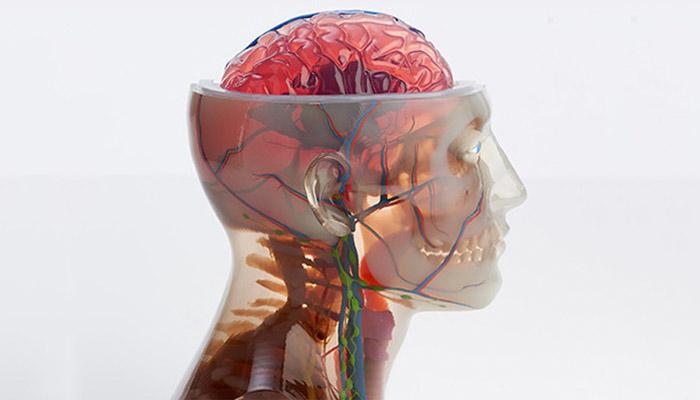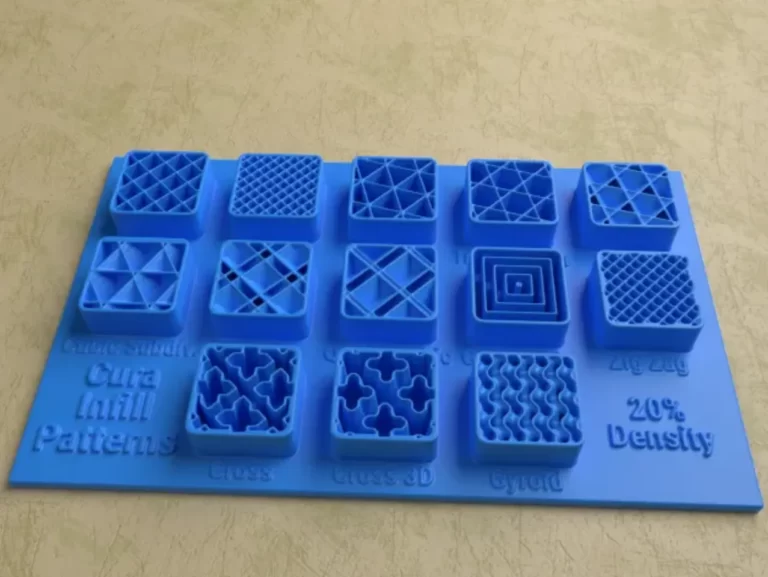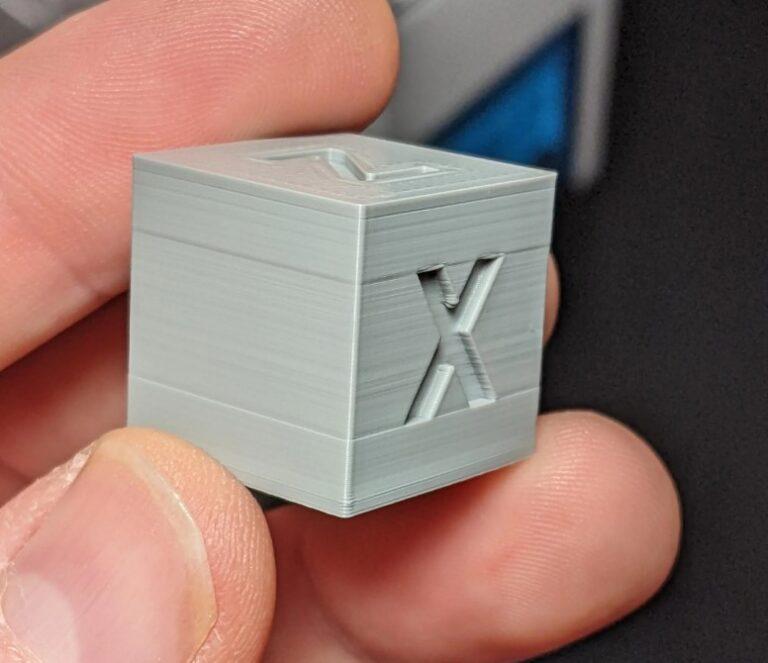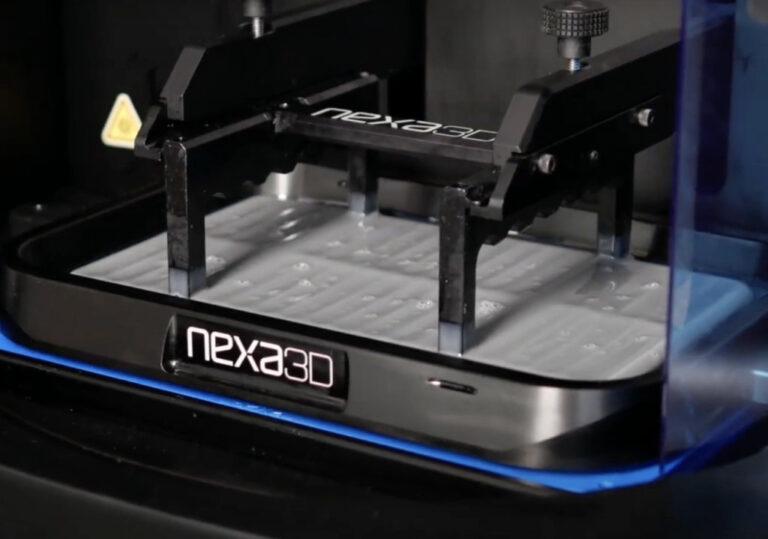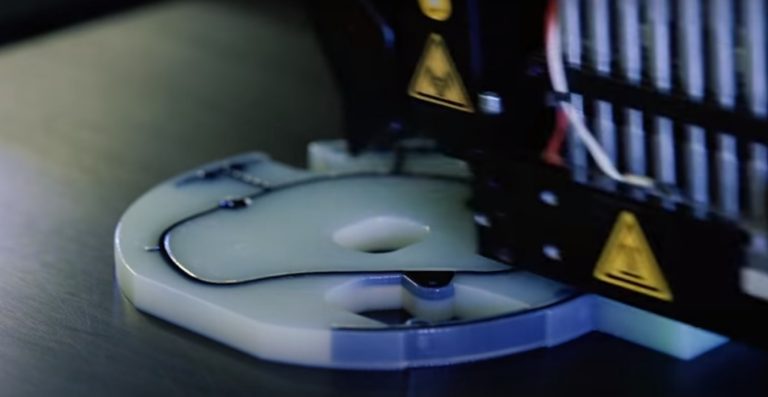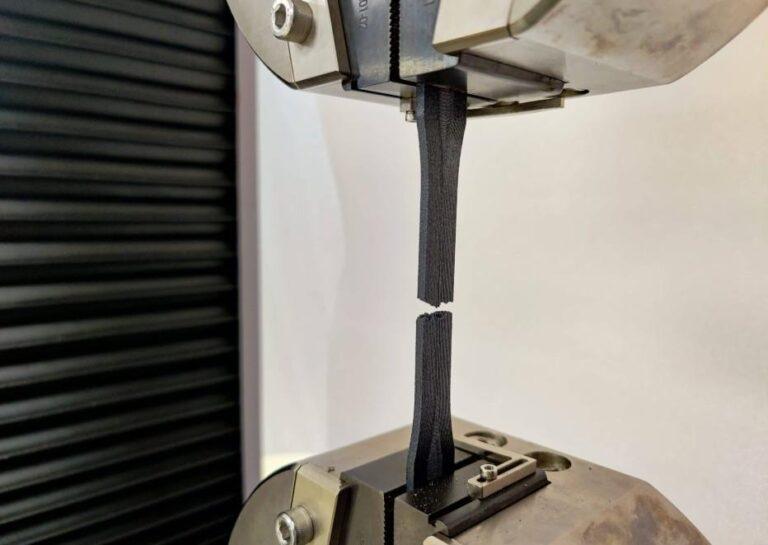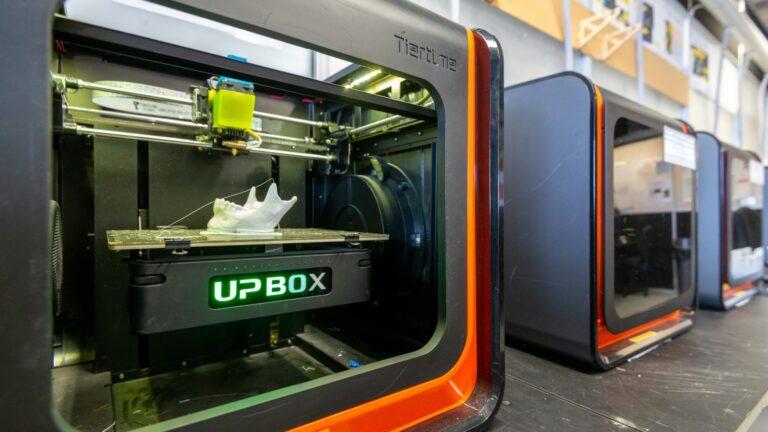Introduction
Welcome to our deep dive into the world of 3D printing, specifically, the comparison of Material Jetting vs. FDM. As technology has progressed, 3D printing has become a critical tool in many industries, from manufacturing to medicine. The choice of a 3D printing method can significantly affect the end product’s quality, cost, and production speed.
Our focus in this post is on two popular techniques – Material Jetting and Fused Deposition Modeling (FDM). Both methods have unique strengths and weaknesses, which make them suitable for different applications. We’ve prepared a comprehensive guide to help you understand these techniques better, considering factors such as cost, speed, material options, and quality.
We’ll start by taking a closer look at each of these methods. We’ll explore what Material Jetting and FDM are, how they work, and their respective advantages and disadvantages. After that, we’ll compare these techniques head-to-head, providing practical examples to illustrate the differences.
By the end of this blog post, our goal is to provide you with the necessary information to decide which 3D printing technique – Material Jetting or FDM – is right for your needs. So, let’s get started with the fascinating journey of Material Jetting vs. FDM in 3D printing!
A brief overview of 3D printing
3D printing, also known as additive manufacturing, has revolutionized the way we create objects. From small toys to large building structures, 3D printing provides a versatile approach to production.
The key to understanding 3D printing lies in the various methods it uses. These methods include Stereolithography (SLA), Selective Laser Sintering (SLS), Material Jetting, and Fused Deposition Modeling (FDM), to name a few. Each method is unique in its approach to transforming a digital model into a physical object.
On one hand, Material Jetting, which is often likened to traditional inkjet printing, creates objects by jetting droplets of material onto a build platform. This method is known for its high detail and ability to print in multiple materials simultaneously.
On the other hand, FDM is a more commonly used method that works by extruding a plastic filament layer by layer to create an object. It’s praised for its simplicity and affordability, making it a favorite for hobbyists and small businesses.
By exploring Material Jetting vs. FDM, we delve into two critical 3D printing methods, each with its unique place in the additive manufacturing landscape. Stay tuned as we delve deeper into these exciting techniques.
Introduction to Material Jetting and FDM
Let’s kick off our exploration of Material Jetting vs. FDM by defining each method.
Material Jetting is a unique type of 3D printing. It works much like common inkjet printers. However, instead of ink, it uses liquid photopolymer. A print head moves across the build platform, depositing droplets of material. These droplets then solidify under UV light. Material Jetting stands out for its high accuracy and ability to print in multiple materials at once.
Now, let’s turn to FDM or Fused Deposition Modeling. FDM is one of the most popular 3D printing techniques. It works by melting a thermoplastic filament. The melted material then extrudes through a nozzle onto the build platform. The printer adds layer upon layer, creating the 3D object from the bottom up. FDM’s main advantages lie in its affordability and ease of use.
In this discussion of Material Jetting vs. FDM, we’ll delve deeper into the intricacies of each method. By understanding these techniques, you can decide which best fits your 3D printing needs.
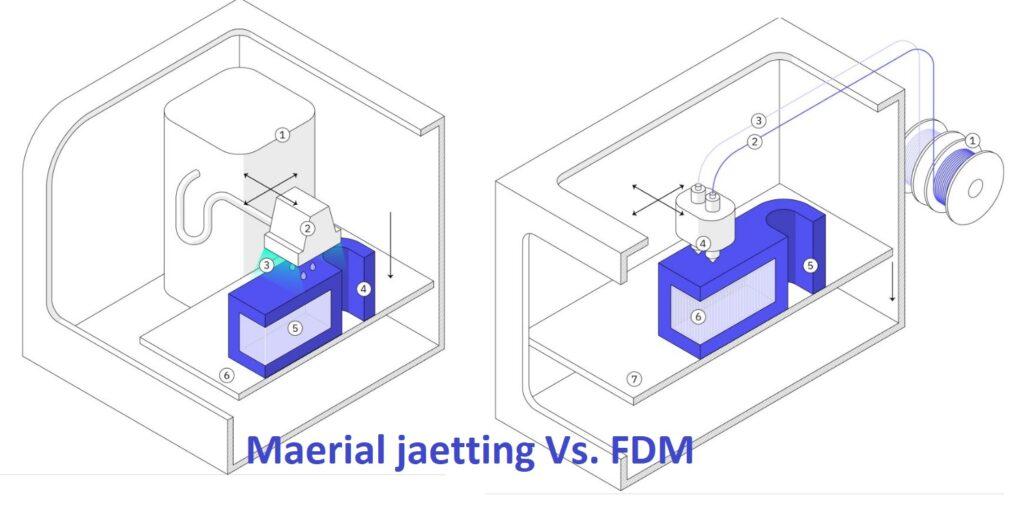
Understanding 3D Printing
3D printing, also known as additive manufacturing, is a game-changer in production technology. It’s a process of creating three-dimensional solid objects from a digital file. The object is created by laying down successive layers of material until the entire object is formed. This layer-by-layer approach distinguishes 3D printing from traditional manufacturing methods. The choice of 3D printing technique, such as Material Jetting or FDM, can greatly impact the final product’s quality, speed of production, and cost. This post aims to help you understand these techniques and make an informed choice for your 3D printing needs.
A brief history of 3D Printing
3D printing first emerged in the 1980s, invented by Chuck Hull, who called it ‘stereolithography.’ In the early days, it served primarily for rapid prototyping. As the technology matured, it expanded into a vast array of industries. From aerospace to healthcare, 3D printing began to revolutionize manufacturing processes. The invention of different techniques, including Material Jetting and FDM, opened up new possibilities. Now, we can create complex shapes with various materials, even combining multiple materials in one print. Today, 3D printing is a key technology driving innovation in numerous fields.
The importance of choosing the right 3D printing method
Choosing the right 3D printing method is crucial for achieving the desired result. Different techniques like Material Jetting and FDM offer unique benefits. The choice can impact the print’s speed, cost, and quality. For example, if you need a high level of detail, Material Jetting might be the best choice. If you’re seeking affordability and simplicity, FDM could be the way to go. The right method can also affect the material options available. In conclusion, understanding the characteristics of each method is essential for making the most of 3D printing technology.
Deep Dive into Material Jetting
Let’s take a closer look at Material Jetting. This method operates similarly to inkjet printing but instead uses liquid photopolymer. The printer jets out small droplets, which solidify under UV light. Consequently, Material Jetting offers high precision and detail. Additionally, it supports multiple materials in one print, enabling the production of multi-color and multi-material parts. However, Material Jetting does have its drawbacks. The process can be relatively slow and the materials are often more expensive. Also, printed parts may require post-processing for best results. Still, for applications requiring high detail or multiple materials, Material Jetting is a compelling choice.
Definition and process
Material Jetting, or MJ, is a sophisticated 3D printing process. It starts with a digital model, sliced into thin layers for printing. The printer then jets a photopolymer material onto the build platform. Layer by layer, the printer forms the object, with each layer solidifying under UV light before the next begins.
Importantly, Material Jetting offers a superior surface finish and fine details. It can also print in multiple materials simultaneously, a significant advantage for certain applications. Moreover, because the process uses a support material that can be easily removed, complex geometries and overhangs are possible.
However, it’s not all positive. The materials used in Material Jetting tend to be more expensive, and the objects produced may not be as robust as those created by other methods. Also, the process is slower, and the printed parts often require additional post-processing to achieve their final properties.
Despite these limitations, Material Jetting is a powerful tool in the 3D printing world. It offers unique capabilities, making it an ideal choice for specific applications requiring high detail or the use of multiple materials.
Advantages of Material Jetting
Material Jetting brings several notable advantages to the table in the realm of 3D printing. First and foremost, it offers exceptional detail and accuracy. Because it works with droplets of material, it can achieve finer details than many other methods. This makes it ideal for intricate designs and applications where precision is paramount.
Additionally, Material Jetting stands out with its multi-material capability. It can print with different materials in the same job, even in the same layer. This opens up exciting possibilities for creating multi-color or multi-material parts.
Furthermore, Material Jetting yields a smooth surface finish, reducing the need for post-processing. This is particularly beneficial for parts that require a polished, professional appearance.
Finally, Material Jetting provides excellent geometric freedom. Thanks to the use of support materials that are easily removed, it can print complex shapes and overhangs with ease. This expands the range of designs that can be successfully printed.
In summary, the benefits of Material Jetting are substantial, offering versatility and precision in 3D printing.
Disadvantages of Material Jetting
While Material Jetting offers numerous benefits, it also comes with a few drawbacks that are important to consider. One significant disadvantage is the cost. The materials used in Material Jetting are generally more expensive compared to those used in other 3D printing methods, leading to higher operational costs.
Moreover, the speed of Material Jetting is relatively slow. This makes it less suitable for mass production or applications where time is a critical factor.
Also, the objects produced with Material Jetting may not be as durable or robust as those created using other techniques. They can be more susceptible to wear and tear, especially under mechanical stress or in harsh environments.
Finally, post-processing is often necessary to achieve the desired mechanical properties and aesthetics. Although the surfaces are generally smooth, achieving a specific finish or color may require additional steps.
In conclusion, while Material Jetting can produce intricate, multi-material parts, it’s crucial to consider these limitations when choosing a 3D printing method.
Ideal applications of Material Jetting
Material Jetting excels in several specific applications due to its unique attributes. One key area is prototyping. With its high precision and smooth surface finish, Material Jetting is ideal for creating detailed and realistic prototypes.
Additionally, this method shines in producing complex geometric shapes. Its ability to print overhangs and intricate details without additional supports makes it a go-to option for complex designs.
Material Jetting also serves well in producing multi-material or multi-color parts. This is particularly useful in applications like product design or medical modeling, where different colors or materials can represent various components or tissues.
Lastly, Material Jetting is beneficial for creating molds for casting or injection molding. The smooth surface finish and high detail accuracy make it suitable for creating master patterns.
In summary, Material Jetting is a powerful tool in areas requiring high detail, complex geometries, or the use of multiple materials.
Unpacking Fused Deposition Modeling (FDM)
Another well-liked 3D printing process is called fused deposition modeling (FDM). Using this method, objects are built from the bottom up, layer by layer. A thermoplastic filament is heated initially until it melts. Then, the printer extrudes the liquid material through a nozzle and deposits it in a predefined pattern onto the print bed. The substance solidifies into a layer as it cools and becomes harder. Until the object is finished, the printer repeats this procedure, building additional layers on top of one another. FDM is a popular option for many applications because of how straightforward, affordable, and versatile it is.
Definition and process
The FDM process starts with a 3D design, typically created using CAD software. This design is then translated into a language the printer can understand, known as G-code, through a process called slicing.
The slicing software divides the model into hundreds or thousands of horizontal layers. These layers guide the printer, telling it where to deposit material. After slicing, the printer is ready to start the actual printing.
At the heart of the FDM printer is a filament of thermoplastic material. This filament is fed into an extrusion head, where it’s heated until it melts. The extruder then moves according to the G-code, laying down the molten material layer by layer. The material quickly cools and solidifies, providing structural integrity to the object.
Once a layer is complete, the build platform moves down, and the extruder starts creating the next layer. This process continues until the entire object is formed.
It’s important to note that support structures are often needed in FDM. These structures hold up overhangs or bridges in the design, preventing them from collapsing during printing. After printing, these supports are removed manually or with the help of chemicals.
In conclusion, FDM offers a straightforward, cost-effective way to transform digital designs into physical objects. Its process is easily understandable, making it a popular choice for hobbyists and professionals alike.
Advantages of FDM
The price of FDM is one of its main benefits. In general, FDM machines and materials are less expensive than those used with other 3D printing techniques. Due to this, hobbyists and small enterprises frequently choose it.
FDM is also quite adaptable. ABS, PLA, and nylon are just a few of the materials that it can print with. Users can select the ideal material for their particular application from this variety of possibilities.
The capacity of FDM to create robust parts is another advantage. High tensile strength makes printed products ideal for functional testing or end-use applications.
FDM is also user-friendly and simple to comprehend, even for beginners. The procedure is simple, and there are a ton of learning and troubleshooting materials accessible.
Finally, FDM can create components of enormous dimensions. Users can produce larger objects with the correct printer than most other 3D printing technologies can.
Disadvantages of FDM
While FDM has many benefits, it also has some drawbacks to consider. One significant limitation is the lower resolution. FDM printers can’t match the fine details that other methods like Material Jetting can achieve.
Another downside is post-processing. FDM prints often require additional finishing steps to smooth the object’s surface. This extra work can increase overall production time.
FDM also struggles with complex designs. Overhangs and undercuts can be challenging to print without support structures. These supports need manual removal after printing, which can be time-consuming and intricate.
Additionally, FDM printed parts may lack strength in the z-axis due to the layer-by-layer deposition method. This aspect might limit their use in some applications where isotropic material properties are essential.
Lastly, FDM prints can exhibit a visible layering effect. While this might not be a problem for some applications, it could be undesirable for others, especially those requiring a smooth, professional finish.
Ideal applications of FDM
FDM technology finds its best use in a variety of applications. It’s often the go-to method for rapid prototyping. This is because it can quickly and economically produce prototypes for design verification.
For industries like automotive and aerospace, FDM is perfect for creating custom jigs and fixtures. These tools aid in manufacturing processes, enhancing productivity and efficiency.
FDM also shines in producing durable and heat-resistant components. This attribute makes it ideal for parts that must withstand rigorous testing or extreme conditions.
In the medical field, FDM assists in creating patient-specific surgical guides. These tools can improve the accuracy of surgical procedures, potentially enhancing patient outcomes.
Moreover, in educational settings, FDM offers a cost-effective way for students to bring their designs to life. They can prototype, iterate, and refine their models without breaking the budget.
Finally, FDM can create large, sturdy parts. This capability makes it well-suited for applications like architectural models or props for the film industry.
Material Jetting vs. FDM: A Comparative Analysis
As we examine the Material Jetting and FDM comparison, we become aware of the distinct advantages and disadvantages of each technique. Both technologies have had a substantial impact on a variety of industries, including industry and medicine. However, making the appropriate choice can be crucial to the success of your project. We will examine a number of variables in this comparison analysis, including precision, cost, materials, and applications. You may make a more informed choice if you are aware of the differences and similarities. By doing so, you’ll utilize 3D printing to its greatest potential for your unique requirements. Let’s start this investigation of Material Jetting vs. FDM, then.
Comparison of speed, cost, quality, and material options
When comparing Material Jetting and FDM, speed becomes a key factor. FDM is generally faster for simpler designs, but Material Jetting can be more efficient for complex geometries.
On the aspect of cost, FDM typically offers a more affordable solution. However, Material Jetting often provides better value when higher resolution and surface finish are necessary.
In terms of quality, Material Jetting usually wins the race. It can achieve finer details and smoother surfaces. FDM, though, is great for functional parts due to its material versatility and durability.
Speaking of material options, both methods offer a range of choices. FDM uses thermoplastics, which are great for functional parts. Material Jetting, on the other hand, uses photopolymers, ideal for high-detail models.
Here’s a summary table:
| Material Jetting | FDM | |
|---|---|---|
| Speed | Medium | High |
| Cost | High | Low |
| Quality | High | Medium |
| Materials | Photopolymers | Thermoplastics |
Remember, the best method depends on your specific project needs. It’s about balancing cost, speed, quality, and material options to achieve your desired result.”
Case study examples for each method
Let’s explore some real-world case studies for both Material Jetting and FDM.
Case Studies of Material Jetting
Stratasys, a 3D printing company, used Material Jetting to create realistic dental models. This helped dentists improve surgical planning, saving time and enhancing patient care. In the automotive industry, BMW used Material Jetting for prototyping. This sped up their design process, while achieving high detail and precision. Moving onto FDM, it also has notable applications.
Case Studies of FDM
Lego, the popular toy company, employs FDM for prototyping. It enables them to quickly test and adjust designs, ensuring the perfect fit for each piece. NASA uses FDM to create durable parts for unmanned aerial vehicles. FDM’s robustness and material options make it an ideal choice for such demanding applications.
These examples demonstrate the practical versatility of both methods, depending on the specific project requirements.
How to Choose Between Material Jetting Vs. FDM
Deciding between Material Jetting and FDM is no simple task. Each method brings unique advantages to the table. In choosing, you should consider the project’s specific needs. If you require high precision and detail, Material Jetting may serve you well. However, for robustness and a wider range of materials, FDM could be a better fit. Also, consider the project’s budget and timeframe. Ultimately, understanding your project’s unique requirements will guide your choice.
Questions to consider
Choosing between Material Jetting Vs. FDM requires careful consideration of various factors. To help you make an informed decision, here are some important questions to consider:
- What level of precision and detail does your project require?
- Are you working with complex geometries that may benefit from support-free printing?
- What is your budget for materials and equipment?
- Do you need the ability to print with multiple materials or colors?
- How important is the speed of production for your project?
- Are there specific material properties or certifications required for your application?
- Do you have the necessary expertise or resources to handle post-processing requirements?
- Are you looking for a more affordable and user-friendly option, or is quality and versatility a higher priority?
- What is the intended use of the printed parts, and how critical is their durability?
Considering these questions will guide you toward the most suitable 3D printing method for your specific needs.
Factors that may influence your decision
Several key factors can greatly influence your decision when choosing between Material Jetting and FDM. These include:
- Precision and Detail: Consider the level of accuracy required for your project and whether Material Jetting’s finer detail capabilities are necessary.
- The complexity of Geometries: Evaluate if your design includes intricate features or overhangs that may benefit from Material Jetting’s ability to print support-free.
- Cost Considerations: Assess your budget for materials, equipment, and ongoing operational costs associated with each method.
- Material Options: Determine if your project requires specific material properties or the ability to print with multiple materials, as Material Jetting offers a wider range of options.
- Production Speed: Take into account the desired turnaround time for your project and compare the printing speeds of both methods.
- Post-Processing Requirements: Consider the amount of post-processing, such as surface finishing or support removal, that may be needed for each method.
- User-Friendliness: Assess the ease of use, setup, and maintenance requirements of each method, especially if you are new to 3D printing.
- Application-Specific Needs: Evaluate how well each method aligns with the specific requirements and intended use of your printed parts.
By carefully considering these factors, you can make a well-informed decision that aligns with your project’s goals and constraints.
The Future of 3D Printing: Material Jetting and FDM
The future of 3D printing in both Material Jetting and FDM holds tremendous potential for advancements and innovation.
In Material Jetting, we can expect further developments in materials, expanding the range of options for different applications. Improved print speeds and larger build volumes are also on the horizon, making it more accessible for large-scale production. Additionally, advancements in multi-material printing and color capabilities will unlock new possibilities for creative and functional designs.
As for FDM, ongoing research aims to enhance its print resolution and surface finish, bridging the gap with higher-end technologies. The development of new, high-performance thermoplastics will further expand its application potential, catering to industries with demanding requirements such as automotive and aerospace. The integration of IoT and automation may also streamline FDM processes, improving efficiency and productivity.
Both Material Jetting and FDM will continue to play significant roles in manufacturing, prototyping, and product development. As the technologies evolve, they will offer increased affordability, user-friendliness, and accessibility. These advancements will empower individuals, businesses, and industries to leverage the benefits of 3D printing in transforming ideas into tangible objects.
Overall, the future of 3D printing in Material Jetting and FDM is bright, with ongoing advancements and innovations driving the industry forward.
Current trends in Material Jetting and FDM
Current trends in Material Jetting and FDM demonstrate the ongoing evolution of these 3D printing technologies.
In Material Jetting, one prominent trend is the development of advanced photopolymer materials with improved mechanical properties and biocompatibility. Another trend is the integration of digital light processing (DLP) technology, which enhances speed and resolution. Additionally, the adoption of multi-material jetting allows for the creation of complex, functional parts in a single print.
In the FDM realm, there is a growing focus on sustainable and recycled materials, aligning with the global push for eco-friendly practices. The trend of hybrid FDM machines, combining FDM with other technologies like CNC machining or robotic arms, is also emerging, enabling enhanced versatility and capabilities. Moreover, advancements in software and automation are streamlining FDM workflows, making them more efficient and user-friendly.
Both Material Jetting and FDM are witnessing increased adoption in industries such as aerospace, automotive, healthcare, and consumer goods. As these technologies continue to mature, we can anticipate further advancements in material options, speed, precision, and post-processing techniques.
Overall, the current trends in Material Jetting and FDM reflect the industry’s pursuit of enhanced performance, sustainability, and user experience, expanding the horizons of 3D printing applications.
Future advancements and predictions
Future advancements and predictions in Material Jetting and FDM hold exciting possibilities, pushing the boundaries of 3D printing innovation.
In Material Jetting, one intriguing prediction is the development of functional gradient materials. These materials would possess varying properties within a single printed part, opening doors for customized and optimized designs. Another potential advancement is the integration of nanotechnology, enabling the fabrication of intricate nanostructures with precise control.
For FDM, the future may see the emergence of continuous fiber reinforcement capabilities. This innovation would allow for the direct integration of strong fibers, such as carbon or glass, into FDM-printed parts, enhancing their mechanical properties. Additionally, the utilization of machine learning and artificial intelligence algorithms in FDM software could optimize printing parameters and automatically adapt designs for optimal strength and efficiency.
Furthermore, the convergence of Material Jetting and FDM technologies could bring forth hybrid systems that combine the high detail of Material Jetting with the structural strength of FDM, enabling the production of complex, functional parts with exceptional performance.
Overall, the future of Material Jetting and FDM is brimming with possibilities, including the development of novel materials, advanced techniques, and unprecedented applications. These advancements will drive the growth and adoption of 3D printing across various industries, revolutionizing design, manufacturing, and customization processes.
Conclusion
In conclusion, the comparison between Material Jetting and FDM reveals distinct strengths and applications for each 3D printing method. Material Jetting offers high precision and fine detail, making it ideal for applications that require intricate designs and smooth surfaces. On the other hand, FDM provides cost-effective solutions, versatility in materials, and robustness for functional parts.
Factors such as project requirements, budget, desired speed, and material options should guide the decision-making process. It is crucial to evaluate the specific needs of each project and consider factors like resolution, complexity, cost, and material properties.
Furthermore, current trends indicate ongoing advancements in both Material Jetting and FDM, including the development of new materials, faster printing speeds, sustainability efforts, and enhanced user-friendliness. These trends reflect the industry’s continuous drive for innovation, pushing the boundaries of 3D printing technology.
As we look to the future, predictions point towards exciting possibilities, such as functional gradient materials, nanotechnology integration, continuous fiber reinforcement, and the convergence of Material Jetting and FDM. These advancements hold the potential to revolutionize industries and open new doors for customization, optimization, and complex part production.
Ultimately, the choice between Material Jetting and FDM depends on the specific requirements, priorities, and constraints of each project. Both methods offer unique advantages and continue to evolve, expanding the possibilities of 3D printing in various fields. By understanding the strengths, limitations, and future directions of these technologies, users can make informed decisions and harness the full potential of 3D printing for their applications.
Recap of key points
- Material Jetting offers high precision and fine detail, while FDM provides cost-effective solutions and versatility in materials.
- Consider factors such as project requirements, budget, speed, and material options when choosing between Material Jetting and FDM.
- Current trends in Material Jetting include advanced photopolymers, multi-material capabilities, and integration of DLP technology.
- FDM trends include sustainable and recycled materials, hybrid machines, and software automation.
- Future advancements may include functional gradient materials, nanotechnology integration, continuous fiber reinforcement, and convergence of Material Jetting and FDM.
In conclusion, both Material Jetting and FDM have their strengths and applications, and choosing the right method depends on project-specific requirements. Stay informed about industry trends and keep an eye on future advancements to leverage the full potential of 3D printing.
Final thoughts on choosing between Material Jetting and FDM for 3D printing needs
In conclusion, choosing between Material Jetting and FDM for your 3D printing needs requires a thorough assessment of your project requirements, budget, desired precision, material options, and application-specific factors. Material Jetting excels in high precision and fine detail, making it suitable for intricate designs, while FDM offers cost-effective solutions and material versatility. Consider factors such as complexity, speed, post-processing requirements, and intended use of the printed parts. By evaluating these aspects, you can make an informed decision and select the method that best aligns with your project goals, budget, and desired outcomes. Both Material Jetting and FDM have their unique strengths, and by understanding their capabilities, you can leverage the power of 3D printing to bring your ideas to life.
How to compare the cost implications of Material Jetting and FDM for your specific project?
- Define the Project Scope and Requirements
Clearly outline the goals, specifications, and expectations of your 3D printing project. Identify the required precision, complexity, materials, and quantity of prints to understand the project’s scale.
- Gather Cost Data
Research and gather cost data for both Material Jetting and FDM technologies. Consider factors such as printer costs, material prices, maintenance expenses, post-processing requirements, and any additional costs associated with each method.
- Calculate Print Cost per Unit
Estimate the cost per unit for your specific project by factoring in material consumption, print time, energy usage, and any applicable overhead costs. This calculation will help determine the cost efficiency of Material Jetting and FDM for your desired quantity of prints.
- Assess Material Costs and Options
Analyze the availability and cost of materials compatible with Material Jetting and FDM. Consider the range of materials required for your project, their prices, and the suitability of each method in terms of material compatibility.
- Consider Post-Processing Expenses
Evaluate the post-processing requirements for both Material Jetting and FDM prints. Take into account any additional costs associated with finishing, support removal, surface treatment, or any other post-processing steps needed to achieve the desired quality.
- Compare Initial Investment and Long-Term Expenses
Compare the initial investment required for purchasing the 3D printer(s), software, and other necessary equipment for Material Jetting and FDM. Additionally, assess the long-term expenses, including maintenance, consumables, and upgrades for each method.
- Factor in Time and Production Speed
Consider the time required to complete prints using Material Jetting and FDM. Assess the production speed, print queues, and any potential impact on project timelines or delivery deadlines.
- Evaluate Return on Investment (ROI)
Analyze the cost implications of Material Jetting and FDM in relation to the value and benefits they provide for your specific project. Assess the ROI based on cost savings, efficiency gains, improved quality, or other relevant factors.
FAQs
Material Jetting utilizes inkjet printing technology to selectively deposit liquid photopolymers layer by layer, while FDM extrudes thermoplastic filament through a heated nozzle to build the object layer by layer.
Consider factors such as project requirements, desired precision, the complexity of design, budget, material options, production speed, and post-processing needs when making your decision.
Generally, Material Jetting tends to have slower printing speeds compared to FDM due to the layer-by-layer inkjet deposition process. FDM, on the other hand, can achieve faster print speeds depending on the complexity of the design.
While FDM can produce good-quality prints, Material Jetting offers higher precision and finer detail, making it better suited for applications that require intricate designs and smoother surfaces.
The print size is limited by the build volume of the 3D printer used. Material Jetting typically offers smaller build volumes compared to FDM, but both methods have printers available in various sizes to accommodate different project requirements.

